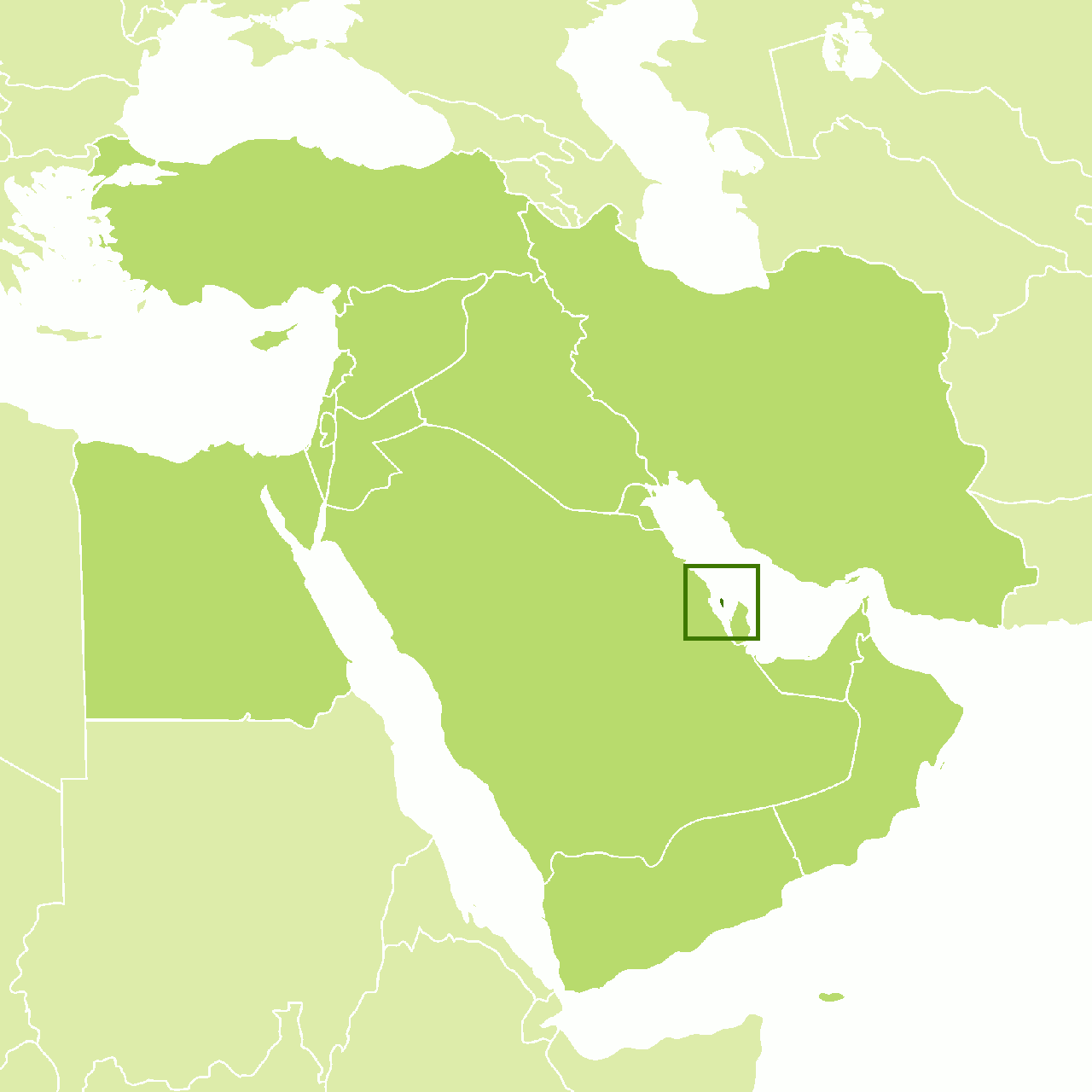The Climate of
Bahrain
 Royal Camel Farm, Bahrain
Royal Camel Farm, Bahrain
What is the climate of Bahrain like?
Bahrain consists of one large island and a number of smaller ones lying off the coast of Saudi Arabia and west of the Qatar peninsula. Its weather and climate are similar to that of the Gulf coast of Arabia but are somewhat modified by Bahrain's island nature. Humidity is high throughout the year except when hot, dry winds blow off the mainland. The high temperatures between April and October are rendered particularly uncomfortable by the humidity.
Bahrain has two seasons: an extremely hot summer and a relatively mild winter. Daily average temperatures in July range from a minimum of 29°C (84°F) to a maximum of 37°C (99°F); the January minimum is 14°C (57°F), the maximum 20°C (68°F).
Summers are very hot and humid, with south-westerly winds causing dust storms and droughts. The combination of intense heat and high humidity makes this time of year uncomfortable. Additionally, in summer, a hot, dry south-westerly wind known locally as Qaws regularly blows sand clouds north across Bahrain's barren southern end. During the hottest weather in summer there is a risk of heat exhaustion or heat stroke, especially for visitors who are not yet acclimatised.
Winters are mild, cool and pleasant. The temperatures from November to March are between 10°C and 20°C (50–68°F). However, the humidity in winter often rises above 90 percent. From December to March, the prevailing southeast winds known as Schammal bring humid air across the islands. Winter temperatures are mild and rarely cool when cold northern winds blow from Iran.
Annual rainfall is light (less than 100 millimeters or 4 inches) and falls mainly between November and March. There are no permanent rivers or streams on any of the islands. Winter rains tend to fall in short, torrential bursts, inundating shallow wadis that are dry the rest of the year.
| Climate data for Bahrain International Airport (1961–1990) | |||||||||||||
|---|---|---|---|---|---|---|---|---|---|---|---|---|---|
| Month | Jan | Feb | Mar | Apr | May | Jun | Jul | Aug | Sep | Oct | Nov | Dec | Year |
| Average high °C (°F) | 20.0 (68.0) | 21.2 (70.2) | 24.7 (76.5) | 29.1 (84.4) | 34.1 (93.4) | 36.4 (97.5) | 38.0 (100.4) | 38.0 (100.4) | 36.5 (97.7) | 33.1 (91.6) | 27.7 (81.9) | 22.3 (72.1) | 30.1 (86.2) |
| Daily mean °C (°F) | 17.0 (62.6) | 17.9 (64.2) | 21.0 (69.8) | 25.0 (77.0) | 29.8 (85.6) | 32.4 (90.3) | 33.9 (93.0) | 34.0 (93.2) | 32.4 (90.3) | 29.2 (84.6) | 24.3 (75.7) | 19.2 (66.6) | 26.3 (79.4) |
| Average low °C (°F) | 14.1 (57.4) | 14.9 (58.8) | 17.8 (64.0) | 21.5 (70.7) | 26.0 (78.8) | 28.8 (83.8) | 30.4 (86.7) | 30.5 (86.9) | 28.6 (83.5) | 25.5 (77.9) | 21.2 (70.2) | 16.2 (61.2) | 23.0 (73.3) |
| Average precipitation mm (inches) | 14.5 (0.57) | 16.2 (0.64) | 14.0 (0.55) | 10.0 (0.39) | 1.1 (0.04) | 0.0 (0.0) | 0.0 (0.0) | 0.0 (0.0) | 0.0 (0.0) | 0.5 (0.02) | 3.8 (0.15) | 10.9 (0.43) | 71 (2.79) |
| Source: NOAA | |||||||||||||
References
- E. A. Pearce, Charles Gordon Smith, (1990) The Hutchinson World Weather Guide, John Murray Press. ISBN 1859863426
- Timothy L. Gall, (ed.), (2003), Worldmark Encyclopedia of the Nations, Eleventh Edition, Thomson Gale
- Federal Research Division, Library of Congress, (1994), Persian Gulf states: country studies. Claitor's Pub. Division. ISBN 0844407933
- Hugh Chisholm, (ed.), (1911), Encyclopædia Britannica, Eleventh edition, Cambridge University Press
The Climate of
Bahrain

In summary:
Summers in Bahrain are very hot and humid with southwest winds raising dust storms and drought conditions. Winters are mild, cool, and pleasant. Prevailing southwest winds contribute to dust storms and occasional drought.
Rainfall averages less than 100 mm (4 in) annually and occurs primarily from December to March.